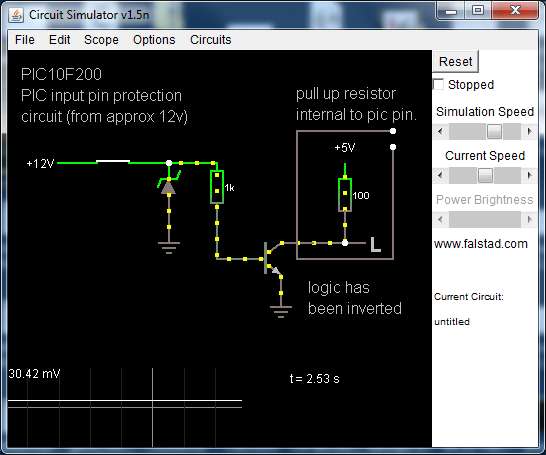I would like to build a circuit to perform a timed shutdown, based on logic inputs from headlamp wires and ignition wires.
I have decided on PIC10F200 (datasheet) to perform the logic.
I also have many spare 7805 linear regulators, so thought I'd use those to perform 12V->5V regulation before connecting directly to PIC pins configured as inputs. Is this a terrible idea? I have added pulldown resistors so that the PIC input pins can read defined values.
Using Fritzing, i've created a circuit:

I'm still tinkering at the moment, and this being my first PIC circuit, I want to make sure I can avoid all the possible traps when working in an environment like this.
So basically, is the circuit okay, or have I overlooked things?
All and any help appreciated, please go easy on me. I'm new!
Update:
Following advice from Olin and Wouter, I now have this:
 Is this ok?
Is this ok?
Olin says making use of the weak pullups on the PIC could save on component count, yhis is how i've interpreted him:
 This works in the simulator, but I've no idea if my pile of BC547 are suitable!
This works in the simulator, but I've no idea if my pile of BC547 are suitable!
I also don't know which to choose, or why?
Thanks again guys.
